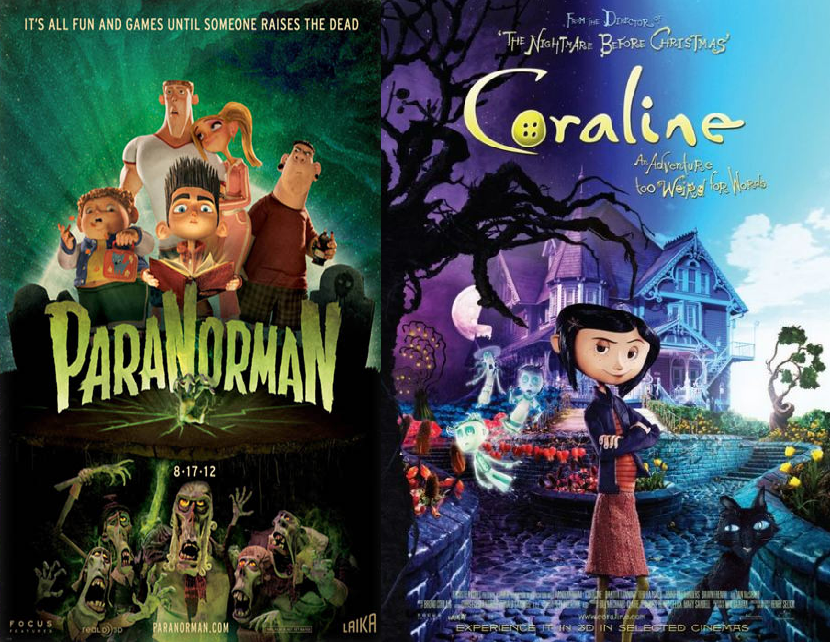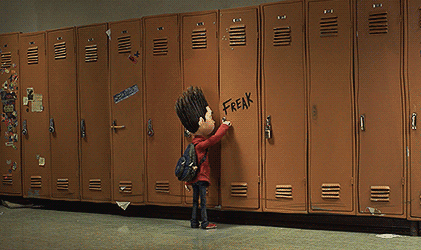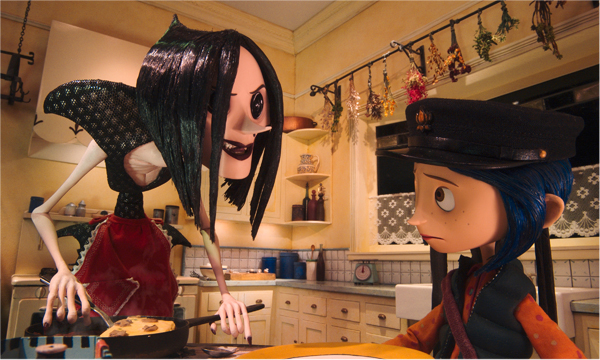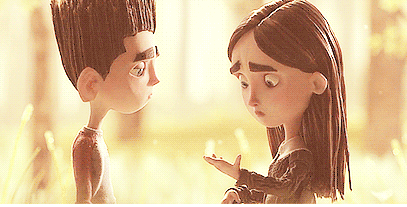When the Studio Laika film ParaNorman came out last summer, discussions regarding the last-minute revelation of one of its character’s homosexuality fell upon depressingly familiar lines. Had the film come out, say, 6 years previous, there might have been a cacophony of hysterical accusations and impassioned defenses of the film’s decision, but in 2012, the overall response seemed more like a quizzical shrug. Sure, there was the specter of “unwanted questions” being raised from the National Review, and calls of the scene making the movie “remarkable” from the Huffington Post, but the act of a gay character coming out at the last minute and marking himself as queer seems hardly revolutionary. While there was once a time when Ellen could come out and risk losing major corporate sponsors, the name of the game has changed and the act of coming out, even in media geared towards young adults (Glee being the most egregious and unfortunate example), seems almost passé. This isn’t to say that we’ll be seeing a gay Disney prince anytime soon, but it isn’t surprising that ParaNorman’s largely safe, sterile and last minute depiction manages to fly under the rader, occupying a space somewhere between the mainstream queer parable of “well, aren’t we all really just the same underneath it all?” and the loud-and-proud fearlessly commercial “born this way” aesthetic.
Even if the film isn’t outwardly, bold, however, it suggests a more nuanced reading of queerness and its portrayal in the media. In a subsequent interview, the co-director of the ParaNorman explicitly said that the inclusion of a gay character was not merely a throwaway gag, but an explicitly political statement by Studio Laika itself. “If we’re saying to anyone that watches this movie don’t judge other people,” Chris Butler told Electronic Urban Report, “Then we’ve got to have the strength of our convictions.” He is referring, of course, to the strong themes of anti-bullying and acceptance that resonate throughout ParaNorman and the studios previous film, 2009’s Coraline. Both films depict young and isolated protagonists, loners who find little but dissatisfaction and loneliness in their regular lives and inhabit parallel worlds where they can better be themselves. These parallel worlds become places that they can express themselves freely, where they are accepted and loved, but ultimately, worlds that cannot, and should not, be inhabited fully. Ultimately, they must return to the real world, with all its pains and travails, but they do so not by abandoning their parallel worlds but by reintegrating them into their everyday existences. In this way, the protagonists neither become separatists nor assimilationists, but delineate for themselves a communal space that they have control over within the greater space of the world itself. This process of reconciliation with the world and with finding a safe space parallels the struggle of many queer youth, who find themselves ostracized, alienated and tormented by their peers and the world around them. In examining the intersection of queerness and youth, Laika does more than just say “bullying is wrong” and add shove the prefix LGBT in there. It analyzes the hard realities queer youth face, and suggests strategies for them to grow, to learn, and to resist without separating themselves from the world or assimilating to a more “acceptably” queer version of themselves.
Before continuing, it seems necessary to define the parameters of the word “queer” in its current context. Queer is an endlessly contested word, loved by some, loathed by others. Its usefulness lies in its elasticity, its ability to reference any number of identities or orientations without singling them out. But the ambiguity of the word makes it seem at times almost formless, an amalgamation of ideas with all the conviction of mush. And compounding its slippery nature is the illusiveness of queerness is contemporary media itself; trying to figure out whether or not a queer reading even exists in a text often feels like looking through a kaleidoscope, trying to figure out if one specific shape is purposeful or just a trick of the light. Part of this, of course, stems from the institution of heteronormativity; any overt deviance from a heteronormative paradigm is preemptively erased, leaving only faint hints and clues to its existence. Queerness, therefore, is predicated on difference, but more specifically on deviance; where it exists, it must be erased. This is the definition that ParaNorman and Coraline use; the protagonists of both films, though not explicitly queer (nor explicitly heterosexual, it must be mentioned), are clearly the oddballs in their respective worlds, and throughout their films have various forms of violence and erasure inflicted on them. In ParaNorman, the protagonist Norman, capable of talking to the dead, is endlessly mocked and ridiculed by his school and neighborhood, at times physically threatened and harassed by bullies. In Coraline, the titular protagonist’s loud, curious, and boisterous personality is constantly stifled by her parents, who clearly have no time for her antics. In both films, the narrative of not belonging emerges, with both protagonists feeling enormous pressure from their families and communities to simply stop being who they are and to “fit in”.
What distinguishes queerness from other intersections of oppression is the insistence on the part of the dominant culture that it is a falsity, an illusion, something to be erased. Because queerness is not explicit, must be explicitly delineated, and can often be masked in ways other identities cannot, the assumption that it is false or performed solely for attention constantly arises. This is where the idea of the “fake” bisexual teen girl, the “transtrender” and countless other myths and boogeymen arise from. When Norman tells his family about the ghosts he sees, he is assumed to be sad and lonely and needy for attention; when Coraline speaks of the parallel world she finds in the fireplace, it is simply a product of her overactive imagination. The experiences of both characters are erased, and the burden on “proving” their experiences lies on them, rather than on the people around them to simply accept who they are. In Coraline, however, the parallel “other” world becomes a place of acceptance, or at least tolerance; her Other Parents dote on her and encourage her imagination, show her wondrous things and ask her if she wants to be their daughter. They only ask one small, simple price; for her to sew black buttons into her eyes, the same ones everybody in this world wears. The movie thus engages the logic of assimilation, central to heteronormativity; Coraline’s queerness is tolerated to a certain degree, but only if she makes it quiet and nonthreatening, subsumed to the dominant cultural logic around her. It is queer erasure at its most insidious; when she refuses, the other parents become angry, and attempt to use guilt, manipulation and outright violence to make her comply, threatening her real parents in the process.
Ultimately, Coraline triumphs through subverting the Other Mother’s expectations of her; she challenges the Other Mother to a game, knowing that it’s rigged from the start and that even if she does win, the Other Mother won’t let her go. Armed with this knowledge, she tricks the Other Mother and manages to escape, retaining her identity and saving her parents in the process. And while it’s not as easy as playing a single trick for queer youth to negotiate their own identities, it is through knowing and understanding the nature of assimilation that Coraline manages to subvert it and ultimately gain acceptance on her own terms.
While Coraline engages the nature of assimilation, ParaNorman focuses on the nature of plain-faced oppression itself. The focus of the story is the tale of Agatha Prendergast, a young 18th century girl who, like the protagonist Norman, could communicate with the dead. Condemned to death by her Puritan community, her spirit haunts the town, placated each year by a bedtime story so that she won’t cause havoc and destruction. Even in death, her anger is obfuscated and ignored, smothered out with the false platitudes and insistences of innocence that accompany all historical wrongdoings. Ultimately, Agatha’s spirit is once again loosed on the world, full of three centuries’ hate and rage towards the people who hurt her. Norman, who has experienced similar, if not as violent, treatment at the hands of the town for his abilities, understandably has sympathy for her cause. He shares her rage towards the world that has demeaned and brutalized them, but he also recognizes the self-destructive tendencies that accompany it. When he ultimately confronts her, he poses the question “What good is hurting them back?” directing her rage and hatred towards him. Although it is tempting to read this as a sort of “we shall overcome,” message, ParaNorman isn’t particularly interested in moralizing; it is the well-being of Norman and Agatha it is invested in, not that of the townspeople who hurt them. Anger as a purely destructive impulse, while emotionally cathartic, is also destructive; as Agatha’s fury becomes greater and she can find no means of reconciling it, she starts taking it out on Norman, someone who has suffered just as she has.
For Agatha, inner peace comes not from forgiving the townsfolk or absolving them of their injustices, but by remembering the people in her life who cared about her; the people who accepted her for who she is, and the people who understood her suffering as they experienced the same. While anger gives an impetus for change and action, solidarity directs its course. Norman and Agatha’s thereby reconcile their anger and their queerness, being able to at once learn to accept themselves and the people who care about them and remaining angry and determined to resist various forms of oppression and erasure.
Working through these characters, Laika suggests means of negotiating the apparent contradictions queer youth face; the pressure to both assimilate and to “be themselves”, the struggle of opposing heteronormativity whilst having non-queer family and friends, and ultimately that parallel and “ideal” worlds cannot exist in vacuums. Instead of drawing away from others, the protagonists of the films learn to both be who they are and to place the onus of acceptance on others, rather than have to “prove” they have a right to exist. And even if the conclusions aren’t revolutionary (there are no revolutions, no world changing events in these films), it is the films’ small victories, ones like the protagonists finally making their friends, family, and loved ones understand that they are who they are, that will make all the difference for queer teens wedged between bare hatred on one end and the insidiousness of forced conformity on the other.





